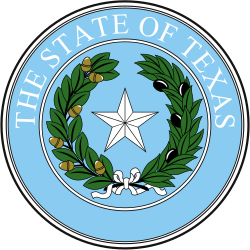Background
Democrats had controlled the Texas Senate since the 1872 elections. [1] In 1971, a number of high-profile Democratic politicians came under scrutiny from the Securities and Exchange Commission for alleged illegal stock trading. The ensuing scandal, which became known as the Sharpstown stock-fraud scandal, enveloped figures such as governor Preston Smith, lieutenant governor Ben Barnes, and House Speaker Gus Mutscher. Mutscher, among others, would later be convicted for his part in the scandal. [2]
Redistricting
The legislature failed to pass new districts for the Senate during its regular session, and they did not pass them during the subsequent special session, either. This forced the Legislative Redistricting Board, made up of four statewide elected officials and the Speaker of the House, to convene for the first time to draw them, instead. [3] The board had been established by a 1948 constitutional amendment passed in response to the legislature's failure to redraw state legislative boundaries after the 1930 or 1940 censuses. [4] [5] The board was made up entirely of Democrats, and they passed a map that was gerrymandered to favor them. [6] The map drew two lawsuits, one by Republicans who challenged the districts in Bexar County, and another by Dallas Democrat Curtis Graves, who argued the districts in Harris County illegally diluted the votes of minority voters. These lawsuits were consolidated with two other suits against the board's map for the House of Representatives under Graves v. Barnes. The district court denied both claims, upholding the board's map, a decision which would later be upheld by the U. S. Supreme Court in Archer v. Smith. [7]
This page is based on this
Wikipedia article Text is available under the
CC BY-SA 4.0 license; additional terms may apply.
Images, videos and audio are available under their respective licenses.

